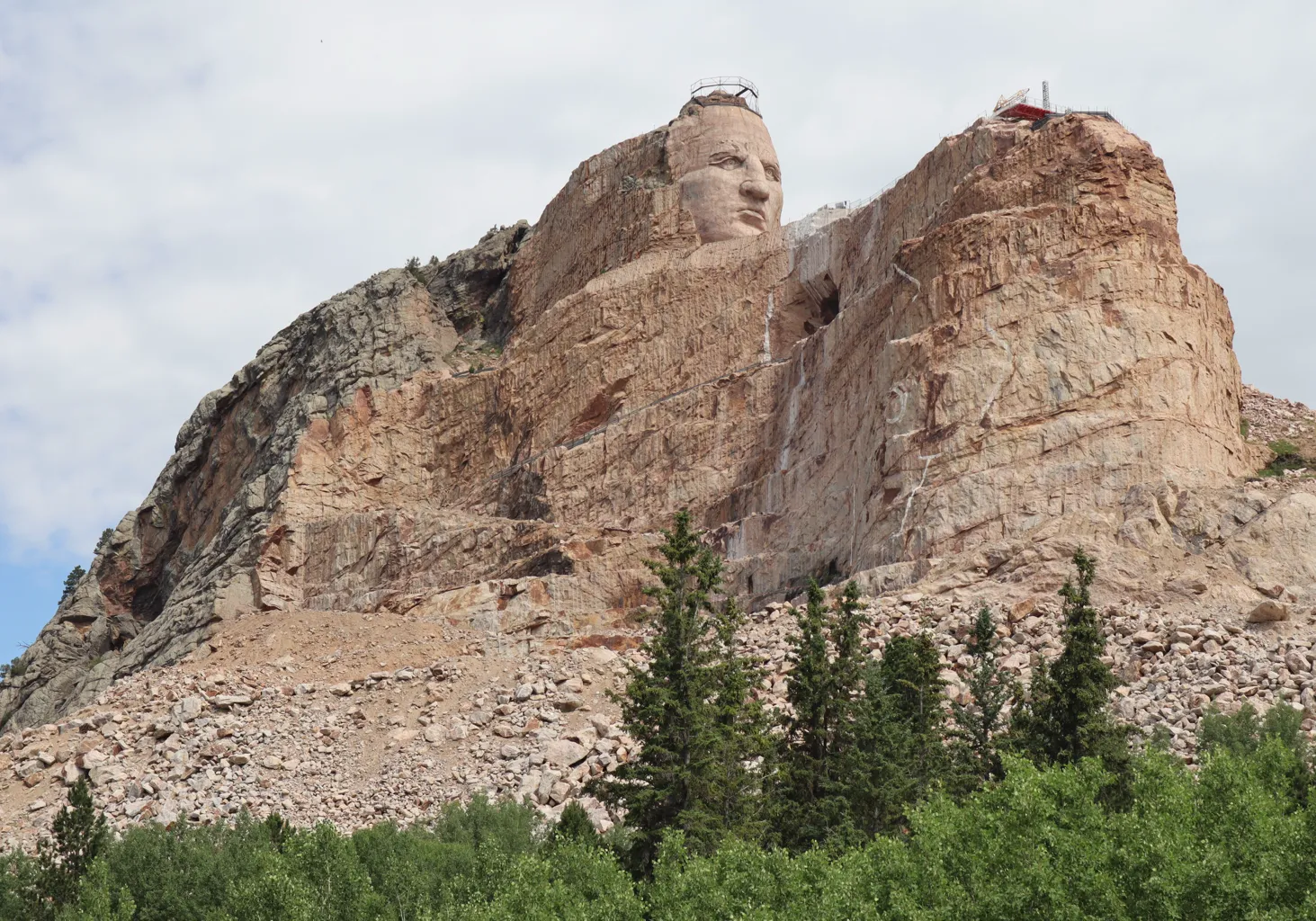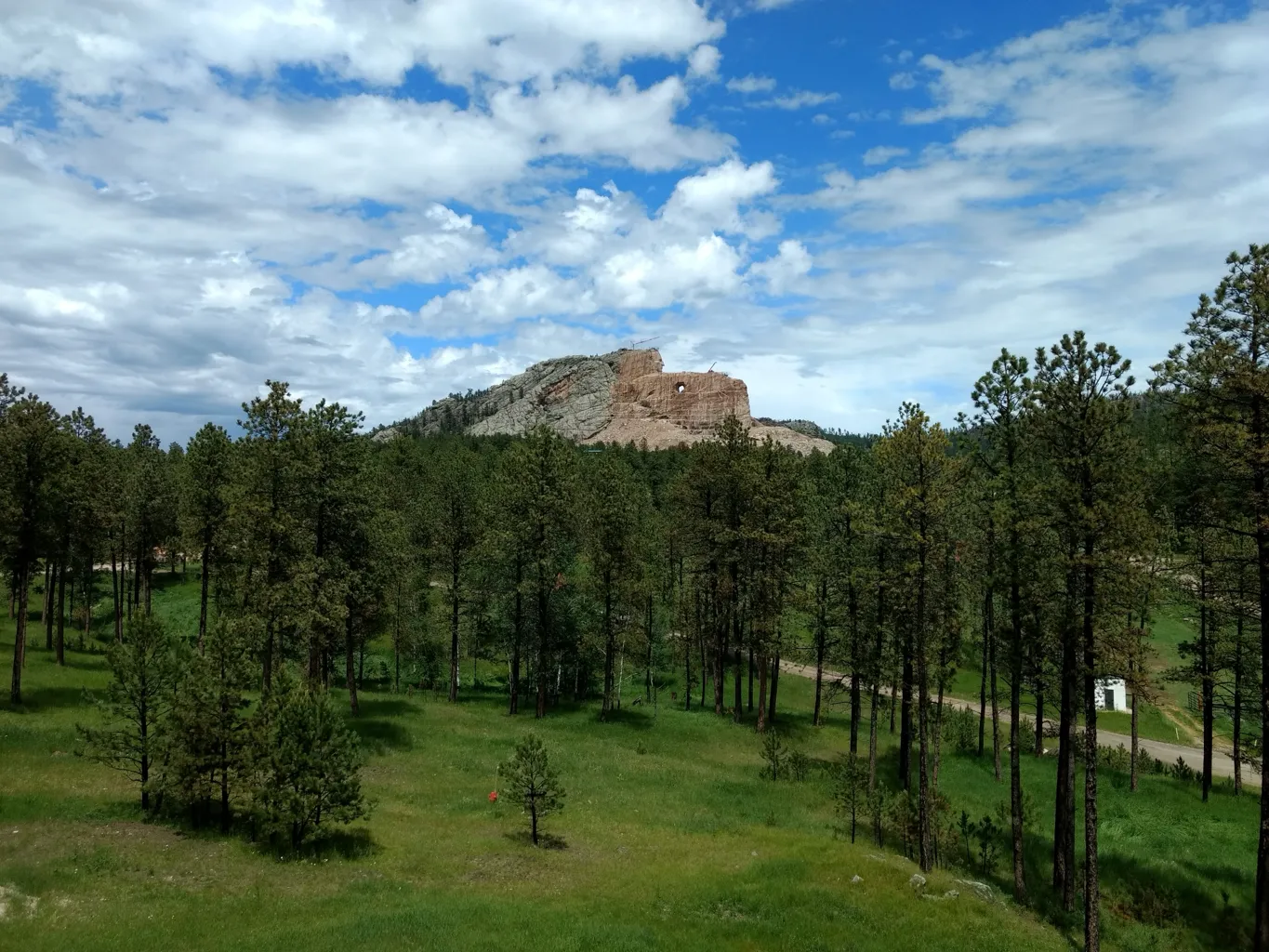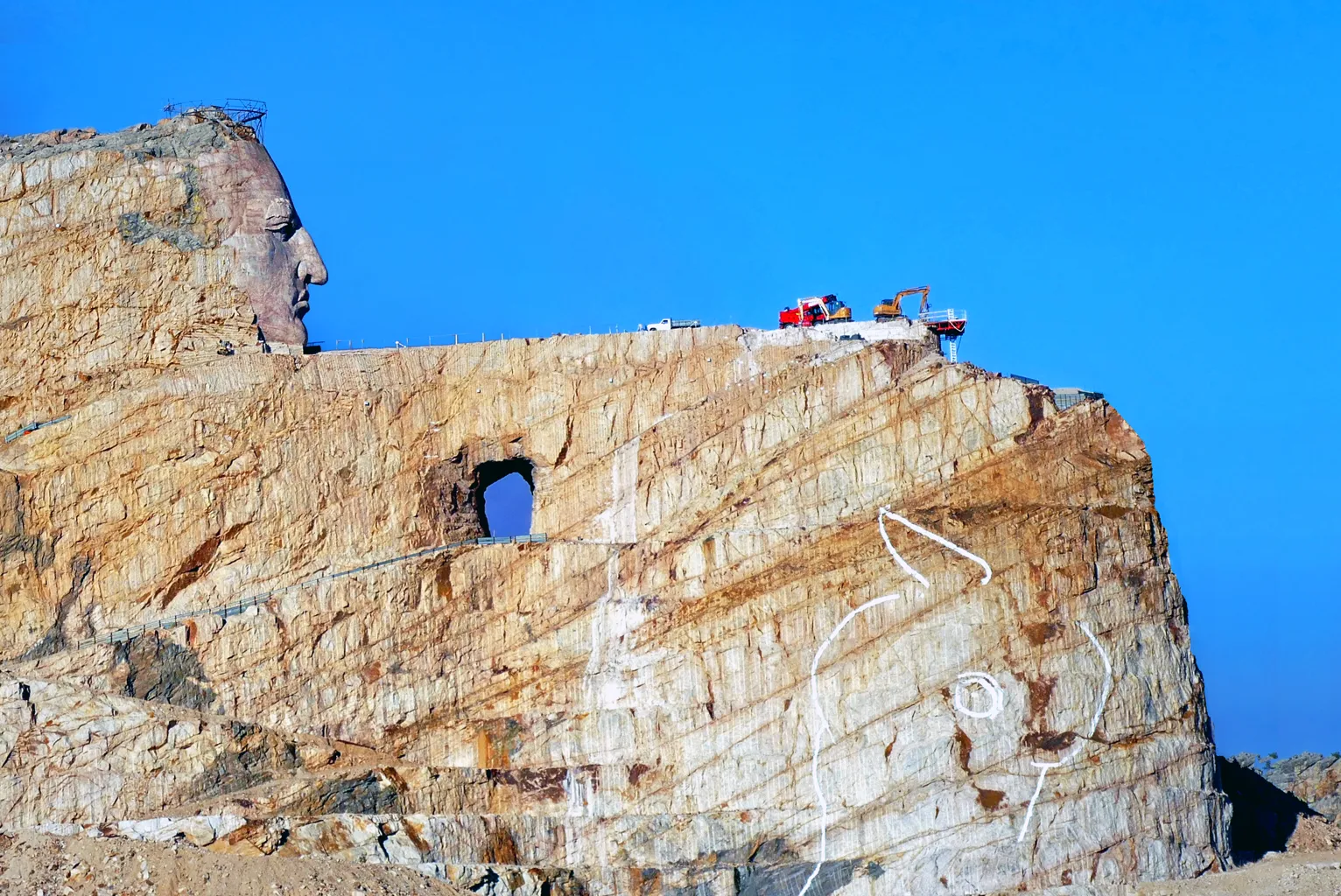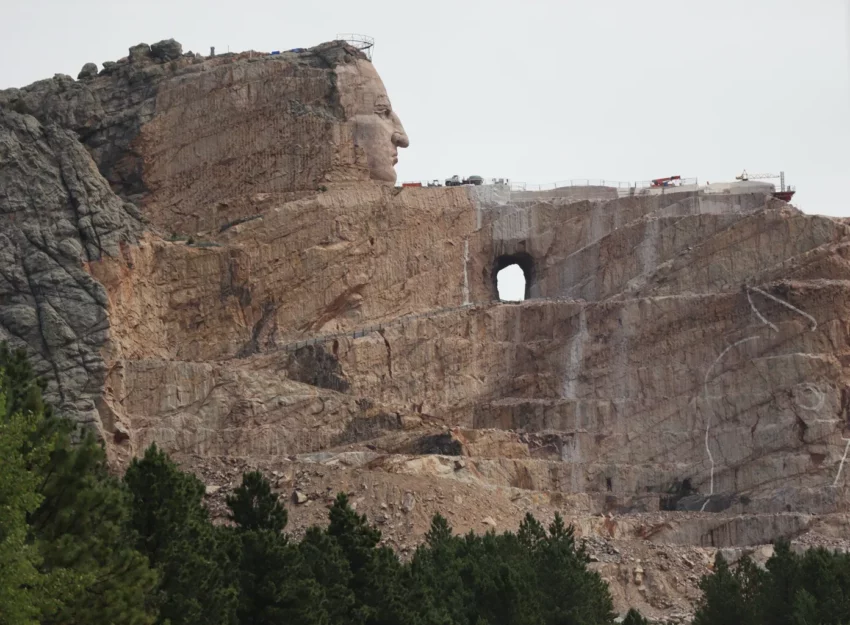Introduction to Crazy Horse Memorial
The Crazy Horse Memorial is a monumental work in progress, located in Custer County, South Dakota, USA. Carved directly into the Black Hills on private land, it depicts the Oglala Lakota warrior Crazy Horse riding horseback. Construction began on June 3, 1948, and continues to this day, though the project remains far from completion.
Get your dose of History via Email
Design and Dimensions of the Memorial
Designed by Korczak Ziolkowski, the monument is being sculpted from the granite face of Thunderhead Mountain. The planned dimensions are awe-inspiring, with a length of 641 feet and a height of 563 feet. In comparison, the head of Crazy Horse, completed in 1998, stands at an impressive 87 feet 6 inches tall.

Historical Background of Crazy Horse
Crazy Horse was a revered war leader of the Oglala Lakota people. He fiercely resisted encroachments by the U.S. government onto Lakota territories. His most notable battles include the Fetterman Fight in 1866 and the Lakota victory at the Battle of the Little Bighorn in 1876. Crazy Horse’s death in 1877 remains shrouded in controversy. Some accounts suggest he was fatally shot by US soldiers while imprisoned or resisting arrest.
Origins of the Crazy Horse Memorial
The idea for the Crazy Horse Memorial originated with Henry Standing Bear, a Lakota elder. In 1939, he enlisted sculptor Korczak Ziolkowski to create a monument honoring Crazy Horse’s legacy. The project serves as a tribute to the heroism of Native American leaders and operates entirely on private donations and revenue from visitors, receiving no federal or state funding.

Memorial Foundation and Management
The Crazy Horse Memorial Foundation, a non-profit organization, oversees the project. After Ziolkowski’s death in 1982, his widow Ruth took charge. Her initial focus was completing Crazy Horse’s face to attract more visitors and funding. Currently, the work continues on the horse sculpture, with significant contributions from the Ziolkowski family.
Controversies and Cultural Perspectives
Despite its intentions, the memorial has faced criticism from some Native Americans who view the carving as a desecration of sacred land. Critics also argue that it goes against the wishes of Crazy Horse himself, who valued the natural sanctity of the Black Hills.
Future Plans and Educational Impact
The vision for the Crazy Horse Memorial extends beyond the sculpture itself. Plans include the development of an educational and cultural center featuring the Indian University of North America. This initiative aims to provide educational opportunities and scholarships, primarily focused on supporting Native American students.

Conclusion
The Crazy Horse Memorial stands as a complex symbol, intertwined with both Native American heritage and contemporary issues. It serves as a tribute to a legendary figure while also sparking discussions about representation, historical narratives, and respect for indigenous cultures. As construction continues, the memorial remains a focal point for these ongoing dialogues.
Sources


